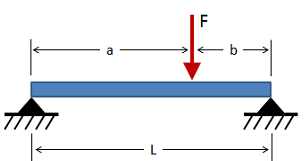CAA1000
Structural
- Jun 21, 2019
- 4
I'm looking to verify that the dynamic load for a guard rail will withstand a 6000 lb point load. The rail is 10 gauge galvanized steel and the manufacturer's crash rating is 4000 lbs at 4 mph.
I know that KE = 1/2 x m x v^2 and
F = m x a
but calculating kinetic energy doesn't seem to help and I'm not sure how to find the acceleration without knowing the stopping time or distance. Any help would be appreciated.
I know that KE = 1/2 x m x v^2 and
F = m x a
but calculating kinetic energy doesn't seem to help and I'm not sure how to find the acceleration without knowing the stopping time or distance. Any help would be appreciated.

![[idea] [idea] [idea]](/data/assets/smilies/idea.gif)
